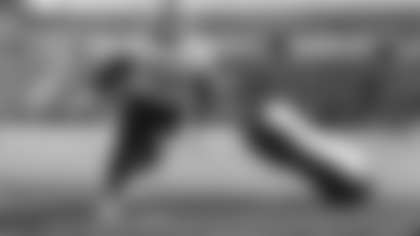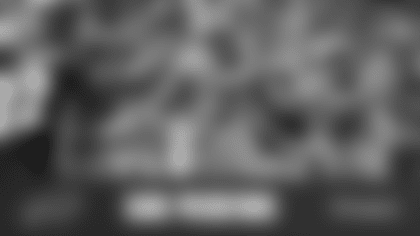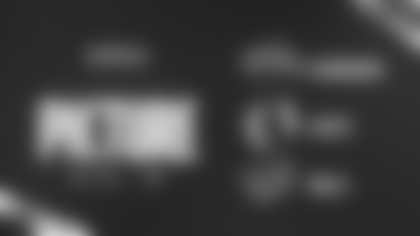The college pro day circuit is in full swing with several schools per day conducting their on campus workouts for their NFL prospects. In most cases those workouts are run by NFL scouts and NFL position coaches. The situation was no different inside the Bills Fieldhouse this week for the University at Buffalo pro day.
Some of Buffalo's best prospects were at defensive back where safety Davonte Shannon and cornerback Josh Thomas are forecast as late round draft choices. After NFL scouts put them through the measurement drills like the 40, the vertical leap and broad jump among others, it was time for Bills defensive backs coach George Catavolos to put the defensive backs through the paces.
Backpedaling and driving or turning out of that reverse motion is the primary requirement if a prospect is going to play in the NFL. That's why almost every position drill Catavolos utilized demanded those skills.
"You're looking for footwork, ability to turn the hips, ability to break," Catavolos said. "You want to see their reaction time, how quick they are to the football, how they catch the football, how quick their feet are and their change of direction. You evaluate the film, but these workouts are another part of the process."
Catavolos had UB prospects execute a hip flip drill where they had to backpedal straight back for 10 yards then flip their hips one way, then the other turning 180 degrees to face an oncoming pass and make a play on the ball with an interception.
"On that one, you're always looking at their ability to catch the ball, but you're looking for the ability to flip their hips easily or if there is any tightness there," said Catavolos. "You want to see if when they make their turn if they can get their front foot up field immediately."
It seems like a minor technique element, but in an NFL game it can mean the difference between a pass break up and a touchdown.
"As a defensive back with receivers taking you on go routes you have to be able to flip your hips and pull your elbow through and get up field and accelerate with the receiver," he said. "For somebody that has some tightness it'll be a little more difficult and they can't get that front foot up field or it's off to the side a little bit and they lose some relationship with the receiver."
The 'W' drill is one that's executed at the NFL combine. With three cones in a line, the defensive backs start at the far right cone, drop plant and drive forward to the second cone, then they drop, plant and drive again and make a play on a pass. The Bills defensive backs coach made use of it as well.
"You're looking to see how well they sink their hips or if they're a little bit more upright in their pedal," said Catavolos. "If their shoulders are over the top of their thighs or if they're a little bit more upright it'll take longer to plant and close on an offensive player as far as making the tackle or a play on the ball."
After a couple of other footwork drills it's time for the safeties and cornerbacks to line up at a boundary cornerback position. First, it's the drop, plant and drive to the sideline. A move executed by corners several times in a game to make a play on an out or comeback route along the sideline.
Deeper drops with hip flip to defend go routes were also employed.
Catavolos was generally impressed with the defensive back talent that UB's senior class had to offer.
"This group of individuals has been schooled very well," he said. "They have good feet, good footwork. They change directions well. Their coaches have done a nice job with them."
And for Catavolos it's not just about a player's performance in the drill, but the adaptation by players to something they perhaps have not seen that factors into the equation as well.
"I'm looking at their reaction time, how well they pick up the drill," Catavolos said. "If they have a hard time understanding and doing the drill correctly after you explained it to them. Sometimes I just evaluate them on their athletic ability and instincts with certain drills. But I'm looking at how they react (mentally) in certain drills."
In the end it goes far beyond how prospects fare in the workout setting. NFL scouts and coaches rely on game tape first and foremost, but there are ways to get additional information on prospects at pro days that you can't get off of film.
"You start with the film and you see how productive they are because that's number one, but schemes change," said Catavolos. "You watch the tape and if they're a big cover-two team the corner is always squatting. You might not see him playing in an off position because he's always in a press position. So here you get a little bit of an idea on how he moves from an off position if he's always in close proximity to the ball."
Of course every opportunity to showcase your talent is one that every UB prospect will take.
"You only get one shot, one opportunity," said UB corner Josh Thomas. "I never want to look back and say I knew I could've jumped higher, I knew I could've run faster, I knew I could've gotten through that three cone drill a little bit better. I'm out there taking a chance and that's what it's all about."





